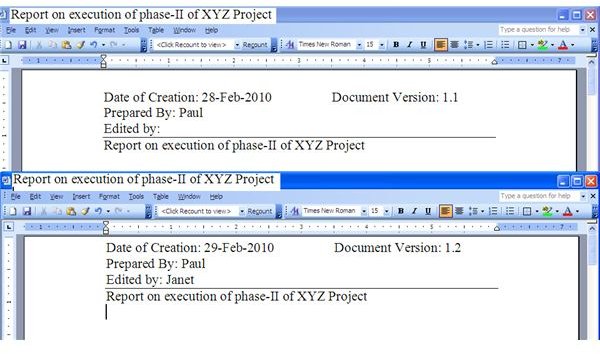6 Steps for Setting up a Document Version Control Policy
The importance of document version control stems from the fact that most documents go through a lot of revisions and editing, especially digital documents in which revisions are difficult to track. Whether for projects or for businesses, it’s critical that the user knows which version of the document he is looking at. Also, in projects where a number of team members are contributing toward developing a collaborative document, which may have to undergo a lot of revisions before getting finalized, it will be easier to mange if the document’s versions are controlled using a proper policy.
Here are some tips on managing document version control for ensuring that each revision of the documents is preserved and changes in each version are easily trackable.
Tips for Setting up a Document Version Control Policy
-
Ideally, a document version control policy should be in place before the project goes into execution. Failing to do so when multiple versions of the same master documents exist with different team members could result in utter chaos.
-
At any point of time during the project execution, there must be only one version of the document in use. As and when the document is edited or revised, the revised version of the document must be made available to all the concerned team members.
-
Every document must have clear details about which team members are allowed to edit the contents of the document and to what extent. Also, the document must have some place to add in information about the edits such as the name of the person, the version code and the date of editing.
-
As far a possible a team member who will be responsible for handling documents, they must be identified and every version of each document must pass through this person. Following this protocol will ensure that all team members have the latest version of the document. Also, this central channel will ensure that there are no different versions of the document being used by different team members. This person will also be required to maintain a detailed log of the different versions of the
documents that pass through him.
-
The document version control policy must be applicable for both physical as well as digital documents. Also the same methods of coding the different document versions should be followed for both the document types.
-
A unique version coding method must be set up and communicated to all team members who are involved with creating, editing, reviewing or revising the documents. They must all clearly explain how the version code must be changed when submitting the edited or revised versions. It is best to use the coding either in the header or the footer of the document. The coding policy must also mention how reviewed and finalized documents must be coded distinctly.
Every project involves the use of a number of different documents, and each document passes though a number of hands before reaching its final destination, thus to ensure that every version of the document is available when needed, the project must have a well defined document version control policy.
Image by: Sidharth Thakur
This post is part of the series: Managing Project Documents
This article series will assist you in developing and executing document control policies and procedures for various documents used in project management.
